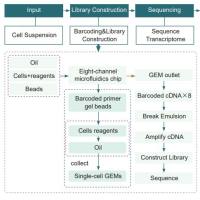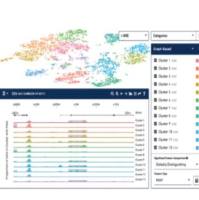Ecological Genomics of Natural Plant Populations: The Israeli Perspective
互联网
541
The genomic era revolutionized evolutionary population biology. The ecological genomics of the wild progenitors of wheat and barley reviewed here was central in the research program of the Institute of Evolution, University of Haifa, since 1975 (http://evolution.haifa.ac.il ). We explored the following questions: (1) How much of the genomic and phenomic diversity of wild progenitors of cultivars (wild emmer wheat, Triticum dicoccoides , the progenitor of most wheat, plus wild relatives of the Aegilops species; wild barley, Hordeum spontaneum , the progenitor of cultivated barley; wild oat, Avena sterilis , the progenitor of cultivated oats; and wild lettuce species, Lactuca , the progenitor and relatives of cultivated lettuce) are adaptive and processed by natural selection at both coding and noncoding genomic regions? (2) What is the origin and evolution of genomic adaptation and speciation processes and their regulation by mutation, recombination, and transposons under spatiotemporal variables and stressful macrogeographic and microgeographic environments? (3) How much genetic resources are harbored in the wild progenitors for crop improvement? We advanced ecological genetics into ecological genomics and analyzed (regionally across Israel and the entire Near East Fertile Crescent and locally at microsites, focusing on the “Evolution Canyon” model) hundreds of populations and thousands of genotypes for protein (allozyme) and deoxyribonucleic acid (DNA) (coding and noncoding) diversity, partly combined with phenotypic diversity. The environmental stresses analyzed included abiotic (climatic and microclimatic, edaphic) and biotic (pathogens, demographic) stresses. Recently, we introduced genetic maps, cloning, and transformation of candidate genes. Our results indicate abundant genotypic and phenotypic diversity in natural plant populations. The organization and evolution of molecular and organismal diversity in plant populations, at all genomic regions and geographical scales, are nonrandom and are positively correlated with, and partly predictable by, abiotic and biotic environmental heterogeneity and stress. Biodiversity evolution, even in small isolated populations, is primarily driven by natural selection including diversifying, balancing, cyclical, and purifying selection regimes interacting with, but, ultimately, overriding the effects of mutation, migration, and stochasticity. The progenitors of cultivated plants harbor rich genetic resources and are the best hope for crop improvement by both classical and modern biotechnological methods. Future studies should focus on the interplay between structural and functional genome organization focusing on gene regulation.









